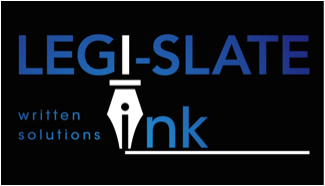21 August, 2016
Bio-printed organs, titanium bones, printed houses, alternative food creation, autonomous cars and copies of Iron Man’s suit; can all these be realized and replicated by 3D printing?
3D printers are able to recreate 3 dimensional objects in the same way printers can reproduce information on paper. For it to work, it requires an electronic schematic of the product, raw materials, and a printer. The printer then lays down successive layers of material, which consist of thinly sliced cross-sections of the replicated object.
But within its broad compass, what are the ethical and legal implications of 3D printing?
When it comes to replacing organs or treating bone cancer or glaucoma, for example, 3D printing can be highly effective, as living bone cells can be printed and used to remedy these conditions. The fact that the patient’s own cells are used entails a new level of customisation that doesn’t exist with conventional treatment. The fact that 3D printing can reproduce a beating human heart for example, from a patient’s own cells, will also avoid the need to wait on a donor list – which is intrinsically beneficial whichever way you look at it. The flipside however, is the cost and the consequent concerns about access, which could lead to injustice, in addition to safety concerns: we do not yet fully know how safe these printed organs are over the long-term.
Similarly, with alternative food production – the first printed hamburger has already been generated -will our bodies reject food at the molecular level, given that it has been artificially manufactured? Ostensibly, though the food may appear to look the same, what will it do to our bodies over time?
Indeed what will 3D printing do to our life as we know it over the next 50-100 years? Will the centre of gravity shift to such an extent that we will no longer need to work? By gradually pulling up the draw-bridge on the agricultural, manufacturing, construction and retail industries, will these industries be completely sidelined? How many industries will be impacted/undercut by houses, buildings, furniture, clothing, shoes, toys being replicated by printing? Boeing is already looking at the cost-effectiveness and efficiency of printing planes and NASA is considering the possibilities of combining 3D printing with Zero-G technology for aerospace travel; which will coalesce to substantially reduce both costs and the density of equipment.
Part of what we do at Legi-Slate Ink www.legislateink.com involves horizon scanning; we search for new technology and developments in the market, which will impact law firms and corporates.
And one of the most relevant fields of law which will be impacted by 3D printing is clearly intellectual property given that the technology’s essential function is to replicate an object. Our current laws governing intellectual property will have to be unpicked, as the use of 3D printing will infringe design rights, and upend traditional notions of copyright, trademark and patent laws as well as liability. Who, for example, is liable when someone prints, say, a gun at home, and injures him/herself with it? Basic product liability dictates that the fault usually lies with the manufacturers. Now, however, the courts will be faced with an unprecedented scenario of considering and apportioning liability between the person who used the untested product, the person who owned the printer and the supplier of the printer.
A brave new world awaits, as we head into the 4th industrial revolution. Along with the Internet of Things, nanosensors, blockchains and opto-genetics, 3D printing is a breakthrough innovation that will usher in wide-ranging ramifications that will impact the planet and transform lives. This emerging frontier bears all the hallmarks associated with extending our lifelines, diversifying our diets, modifying our energy sources and transforming the housing, entertainment, consumer and many other industries. But the real test will lie in its efficacy over time and its acceptance by us to become an integral part of our lives.
For more information, please contact:
Aparna Bundro CMO, Legi-Slate Ink
legislateink@gmail.com


